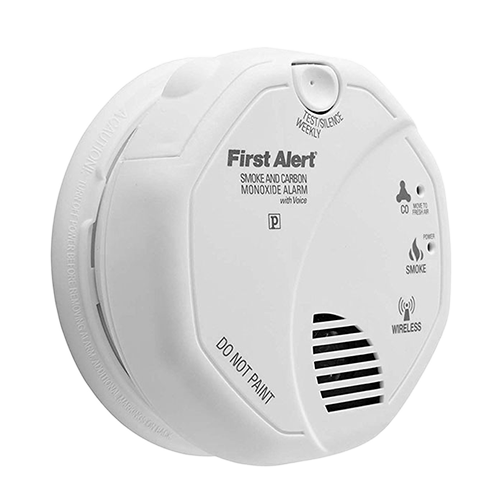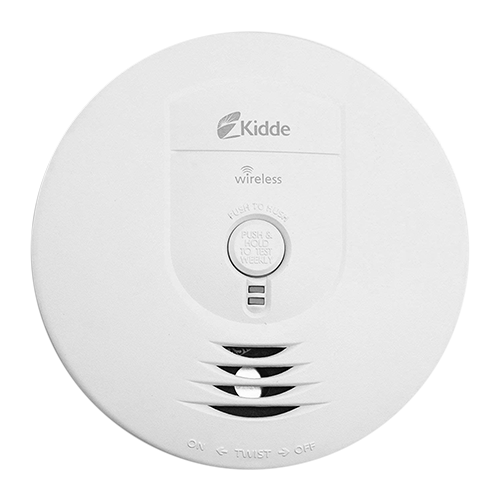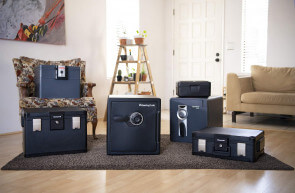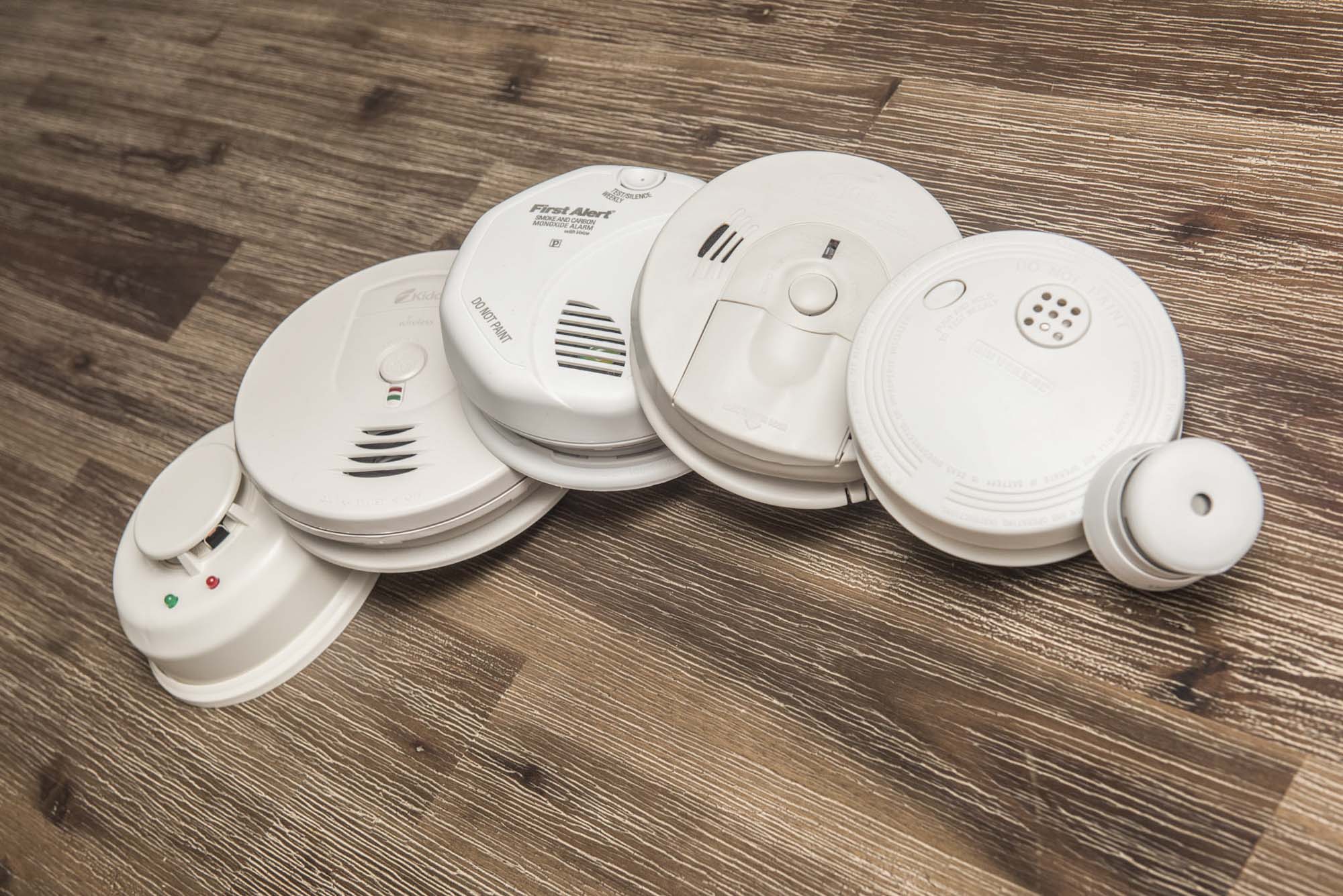
The Best Smoke Detectors
Based on our review of the product testing literature, consumer reviews, safety agency guidelines and specialty publications to find the best smoke detector, we actually identified two top picks that we recommend you use in tandem: the photoelectric-sensor First Alert – SCO501CN and the ionization-sensor Kidde – RF-SM-DC. To thoroughly and responsibly safeguard your home, it’s essential to have both types of sensors co-located at each spot in your house.
Based on our review of the product testing literature, consumer reviews, safety agency guidelines and specialty publications to find the best smoke detector, we actually identified two top picks that we recommend you use in tandem: the photoelectric-sensor First Alert – SCO501CN and the ionization-sensor Kidde – RF-SM-DC. To thoroughly and responsibly safeguard your home, it’s essential to have both types of sensors co-located at each spot in your house.
Table of contents
- How we selected finalists to test
- Why you should trust us
- Compare the best smoke detectors
- Who needs a home smoke detector?
- Important features to consider
- How we tested
- Top pick bundle: First Alert + Kiddie First Alert – SCO501CN
- Other finalists we tested
- The bottom line
How we selected finalists to test
As is the case with hard-wired smoke detectors, battery powered units come in a large price range. Battery powered smoke detectors provide virtually all of the safety of a hard-wired system without the inconvenience and expense of construction and the need to connect to a central security panel. The market for these types of units is dominated by First Alert and Kidde, and both of these manufacturers also have several highly rated models online. Our screening involved a four-step process:
- Screen for units below $50, with a target range of $25-$35 per unit. Most of the benefits of buying a unit above $35 relate to integrating units with complete home monitoring systems. The essential protective features needed from a smoke detector are available in many units in our target price range. Two outliers were selected (including one higher priced unit from Honeywell) in order to include a range beyond the two dominant manufacturers.
- Screen for average online consumer rankings as a function of rating and number of reviews; we sought out units that were very well-liked by consumers and we explored the Q&A section of the reviews to determine whether the units held up to scrutiny from verified purchasers.
- A review of the literature relating to residential smoke detectors.
- Identify units that cover the spectrum of useful features: interconnectivity for installing multiple units in a home, hush buttons, long life (lithium) batteries and the option to link to a home security panel that in turn notifies the local fire department in the event of a fire (Honeywell – 5808W3).
While there are units that combine both types of sensors in one unit, consumers can be prone to disabling the entire unit as a result of false alarms (typically arising from the ionization sensor), which clearly defeats the entire purpose of early smoke and fire detection. With battery powered units, the entire functionality of the unit depends on whether the battery works properly.
If you are the type of person who is vigilant about setting and resetting alarms, then a unit that touts its capability for detecting both smoke and fire like the Universal Security Instruments – SS-770 might work well for you. However, installing two types of units is the optimal way to go for most people. The inclusion of a CO detector with a fire and smoke alarm is an added benefit. The “false alarm” dilemma also applies to units with integrated CO detectors: disabling the unit due to a false alarm will render the premises unprotected.
In terms of understanding the critical issue of battery life and when to test batteries, a subreddit discussion on batteries and nuisance alarms is quite helpful. Some of the problems relating to false alarms — such as units sometimes going off in the middle of the night — underscores the importance of having a silence feature for nuisance alarms, particularly for larger homes that require multiple units scattered in different locations throughout a house.
Although we did not test any units that have a voice-silencing feature, there are (pricier) smoke detectors that do have it.
Why you should trust us
We reviewed specialist fire protection publications, public and private fire-related research sites and interviewed subject matter experts to understand the essential aspects of home fire protection and the specific features needed to protect one’s home.
One of the most important, if not the most important aspect of installing battery operated smoke detectors is to perform regular battery checks. Absent working batteries, an individual alarm is worthless and a network of linked alarms is seriously compromised.
Combined with the propensity for consumers to disable alarms, the use of battery powered smoke detectors relies as much on consumer maintenance as it does on the equipment itself. It is also important to keep any smoke detector — battery or hardwired — free of dust and debris to ensure reliable performance.
We spoke with Steve Ferraina, a veteran firefighter for the City of Los Angeles who spoke about the importance of maintaining batteries: “While a hardwired system is optimal, it’s understandable that this type of system is not feasible for everyone. If you use battery-powered detectors, it helps to have a built-in reminder — like an automatic order — to check your units.”
Like many experts, Meiche believes that both photoelectric and ionization sensors need to be used in tandem, and if a consumer elects to use a battery system, separate units are the way to go. Ferraina also notes that more expensive is not necessarily better. “We used to give away smoke detectors for free. And as you’d expect, they were on the basic end of the spectrum. But the department would not have given them out if they weren’t excellent units.”
Field testing smoke detectors is by definition a hazardous endeavor that should be carried out in a controlled setting. The NIST, a division of the US Department of Commerce, is involved in promoting innovation and competitiveness for domestic businesses. The NIST sponsors research papers relating to domestic fire alarm performance, along with establishing performance metrics to inform the development process for products and reduce the incidence of nuisance alarms.
In a NIST technical note Results From a Full-Scale Smoke Alarm Sensitivity Study, T.G. Cleary and A. Chernovsky tested both photoelectric and ionization alarms in a variety of scenarios that varied fabric type (cotton and polyester,) ignition type (smoldering versus flaming), fire location and ventilation. They created a full-scale set at the NIST that included a smoldering sofa and created a matrix for response times under eight different smoldering scenarios.
Overall, the dual sensors performed the best in this study, but the findings for the single alarm types are quite important: the photoelectric sensor units significantly outperformed the ionization units for smoldering scenarios, while the opposite was true for flaming scenarios. Although a dual unit can perform as well or better than co-located separate units, the propensity for operator negligence in terms of replacing batteries makes it more sensible to go with single sensor units.
In 2012, the NBC television network affiliate in Dallas/Fort Worth performed a smoke alarm test with a smoldering sofa. The photoelectric sensors they tested took less than twenty minutes on average to trigger the alarm, while the ionization units took nearly three minutes longer on average — enough extra time for the fire to have already become free burning. In reviewing the results of the test, Don Russell, a professor at Texas A&M noted that in some instances, ionization smoke detectors are simply too slow to respond to a developing fire.
Compare the best smoke detectors
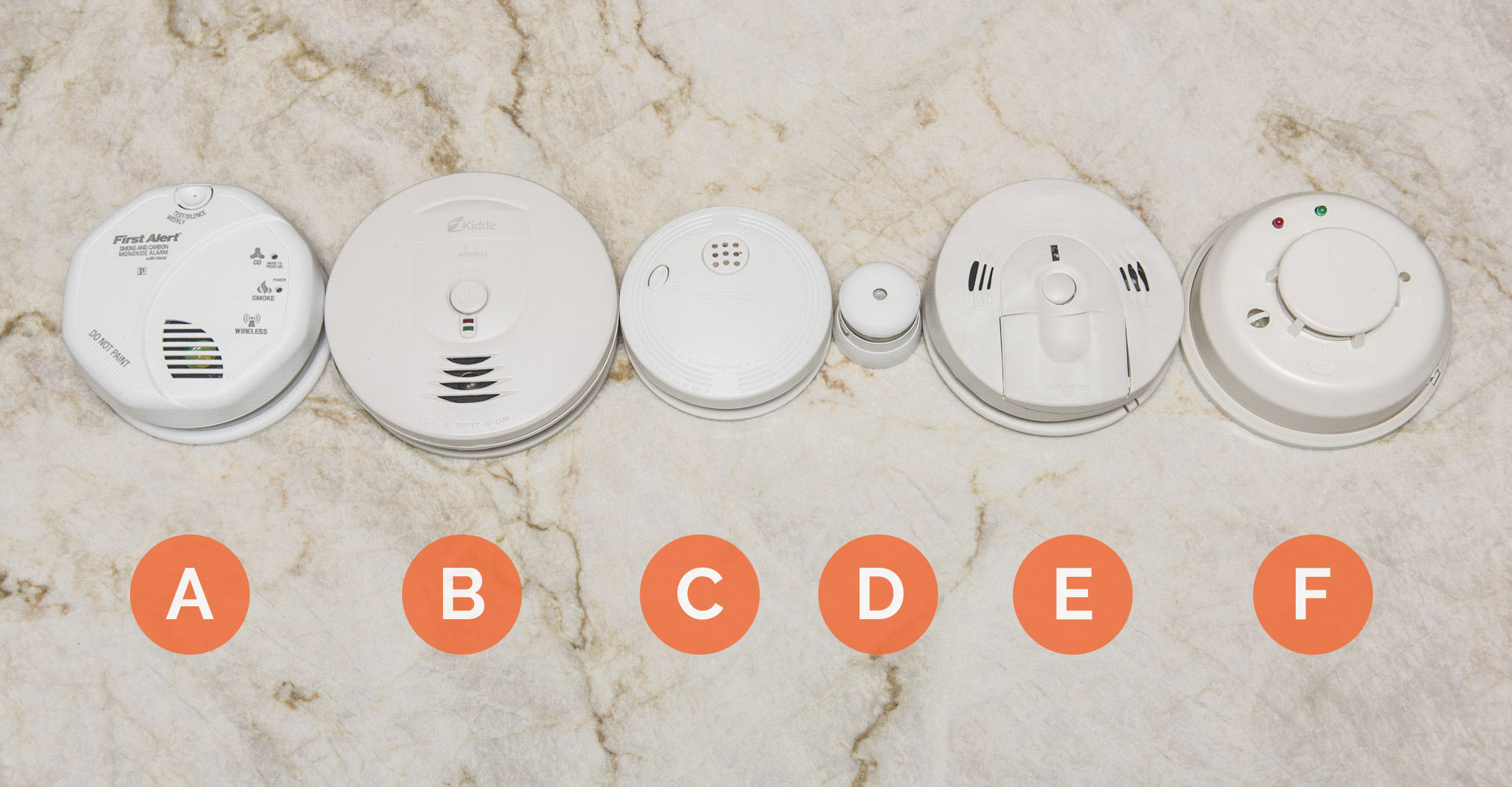
| Product | Price | Sensor Type | Interconnect Capability? | Carbon Monoxide Detector? | Battery Type |
|---|---|---|---|---|---|
| A. First Alert - SCO501CN | $$$ | Photoelectric | Yes | Yes | AA |
| B. Kidde - RF-SM-DC | $$$ | Ionization | Yes | No | AA |
| C. Universal Security - SS-770 | $$ | Photoelectric | No | No | AA |
| D. First Alert - P1010 | $$$ | Photoelectric | No | No | Lithium |
| E. Kidde - KN-COSM-BA | $$$ | Ionization | No | Yes | AA |
| F. Honeywell - 5808W3 | $$$$ | Photoelectric | Yes | No | Lithium |
Who needs a home smoke detector?
The National Fire Protection Agency (NFPA) estimates that there are 2,300 fatalities annually that occur in approximately 365,000 residential fires in the US. Having working fire alarms in a home is estimated to cut the risk of fire death by approximately one-half.
It is crucial to recognize that smoke alarms do not extinguish a fire, but merely detect the presence of a fire or potential fire. The principal function of a smoke alarm is to alert the occupant of danger and to allow them sufficient time to escape unharmed.
Lifesaving home safety
Smoke alarms are essential for home safety; they provide early detection that can prevent damage to property and life-threatening fire and smoke conditions. We probed the literature for recommendations about the safest approach to procuring and installing fire alarms.
As a life safety product, fire alarm testing is performed in settings where simulated fire and smoke conditions are created. The majority of research has therefore been conducted by government agencies such as NIST and NFPA, in addition to universities.
Property protection
The use of smoke alarms is regulated at the state and municipal level, and every jurisdiction has its own regulations pertaining to new construction and existing dwelling units. Additionally, many insurance companies mandate smoke (and CO) alarms as a precondition for providing home insurance. FEMA provides a current list of state-by-state requirements and guidelines for using home smoke alarms. In addition, both First Alert and Kidde provide regulatory information on their home sites.
New construction compliance
For new construction, many states require smoke detectors to be hard-wired to a home’s electrical system, while battery powered units are sufficient for existing dwellings. In most cases, transferring property in instances where there is a lender involved will require that a home is equipped with functioning smoke detectors.
For small apartments that may only need to monitor smoke in one location, the Universal Security Instruments – SS-770 provides excellent ionization detection without an interconnect feature. Although the Universal unit is the most budget-friendly detector we tested (approximately $21/unit) it is the only one to use proprietary technology — Universal Smoke Sensing Technology — that detects both fast burning and smoldering fires. The Universal SS-901-2C uses a nine-volt battery versus the more commonly found AA batteries. The Universal would make a good companion to a photoelectric detection sensor that also uses a nine-volt battery.
Important features to consider
Like many home electronics products, smoke detectors are available with a dizzying array of optional features. While the essential purpose of a smoke detector is to make noise when smoke or fire is detected, there are many other options to consider. Our analysis of what consumers find most valuable includes the following features:
Power source: The choice is between battery-powered versus units that are hard-wired into an electrical system. Battery powered units do not require installing wiring behind walls and are far more convenient to install. On the flip side, it is essential to regularly check and replace batteries and to keep the units clean.
Type of sensor: Photoelectric sensors provide better detection for slow-burning, long-smoldering fires, while ionization detectors perform better in the event of fast burning, flaming fire. To safeguard your home, it is essential to have both types of units co-located at each required spot. There are many units that combine both types of sensors, but we do not recommend these in the even that they are disabled from nuisance false alarms.
Carbon monoxide monitor: Having a carbon monoxide monitor included in a unit adds some cost, but it is an essential thing to have. One of the units — either the photoelectric sensor or the ionization sensor should also include a CO monitor.
Smart detection for the location of fire and smoke: In the range of units that we tested, only one, our joint top pick First Alert model, provided a voice alert for the specific room location of a fire. For children or older people who may not respond as readily to a horn or beep alarm, this can be a desirable feature.
Silence buttons: Anyone who has a working fire alarm and cooks is aware that now and then, a non-life-threatening cooking mishap can set off a nuisance alarm. Having a silence button makes it easy to temporarily halt the alarm — or multiple alarms if they are interconnected — rather than yanking out a battery.
Hard-wired vs. battery powered
For anyone who is not buying or building a new home or undertaking a substantial renovation of their home, battery-powered smoke detectors are a sensible choice. Over time, digital and wireless technology have made battery powered smoke detectors as sophisticated as their hard-wired siblings. Features such as interconnection, voice alerts, programming specific areas of a home and remote home monitoring are available in higher end battery powered units.
While there are many benefits to having a hard-wired system, including the ability to connect to a remote home monitoring service to automatically dispatch emergency help, this type of system is installed primarily to comply with local building codes. While battery powered smoke detectors are at risk for operator negligence in terms of battery replacement, one major benefit is that they will continue to operate in the event of an electrical interruption in a home.
More sophisticated (and expensive) battery powered units like the Honeywell 5808W3 are designed to link to central security panels and are even used for commercial installations. In effect, the Honeywell is a battery unit for people who want the sophistication of a hard-wired smoke detector but who do not want to rip into their walls.
The Two Main Types of Smoke and Fire Detection Sensors
Photoelectric sensors work when smoke enters the alarm and deflects the light emanating from an LED beam. As the results of the Cleary NIST and NBC studies confirm, photoelectric sensors are more effective at detecting slow-smoldering fires, including fires that can smolder for hours before becoming inflamed. A common source of a slow smoldering fire is a cigarette butt left burning in a sofa.
Ionization detection works by having a tiny amount — typically measured in units called “kilo becquerels” — of the radioactive material Americium 241, that acts to ionize nitrogen and oxygen to create a small electrical current that in turn triggers an alarm. The main drawback for ionization alarms is that they are prone to false/nuisance alarms and are consequently also prone to being disconnected. However, for free-burning fires, ionization detectors are generally more responsive than photoelectric models.
In research focused on the topic of disabled alarms, a study of smoke alarms in rural Alaska homes found that the incidence of nuisance alarms in homes with ionization smoke detectors was eight times higher than for photoelectric alarms. The danger of nuisance alarms was manifested by the fact that ionization smoke alarms were almost 5 times more likely to be disconnected 6 months after installation compared with photoelectric alarms.
A Texas A&M study that took into account disabled alarms concluded that the probability of a fatality was 19.8% with ionization alarms when used exclusively, but only 3.99% with photoelectric alarms. Based partly on these findings, the International Association of Fire Fighters, the largest firefighter union in the world, supports legislation making photoelectric alarms a mandatory requirement for fire and building codes.
How we tested
| Product | Test 1: Avg. Alarm Time from Steam | Test 2: Response Time from Fire | Alarm Type | Hush Button Test |
|---|---|---|---|---|
| First Alert - SCO501CN | 35 secs | 47 secs | Horn | Success |
| Kidde - RF-SM-DC | > 60 secs | 22 secs | Beep | Success |
| Universal Security - SS-770 | > 60 secs | > 60 secs | Beep | N/A |
| First Alert - P1010 | > 60 secs | > 60 secs | Beep | Success |
| Kidde - KN-COSM-BA | > 60 secs | 10 secs | Beep | N/A |
| Honeywell - 5808W3 | > 60 secs | 44 secs | Horn | N/A |
Approach
Our testing involved basic, high-level testing in a non-laboratory (home) setting. Most extensive testing of smoke detectors involves either a university or institutional setting in which a highly controlled environment and scientific methodology can be employed.
Battery test
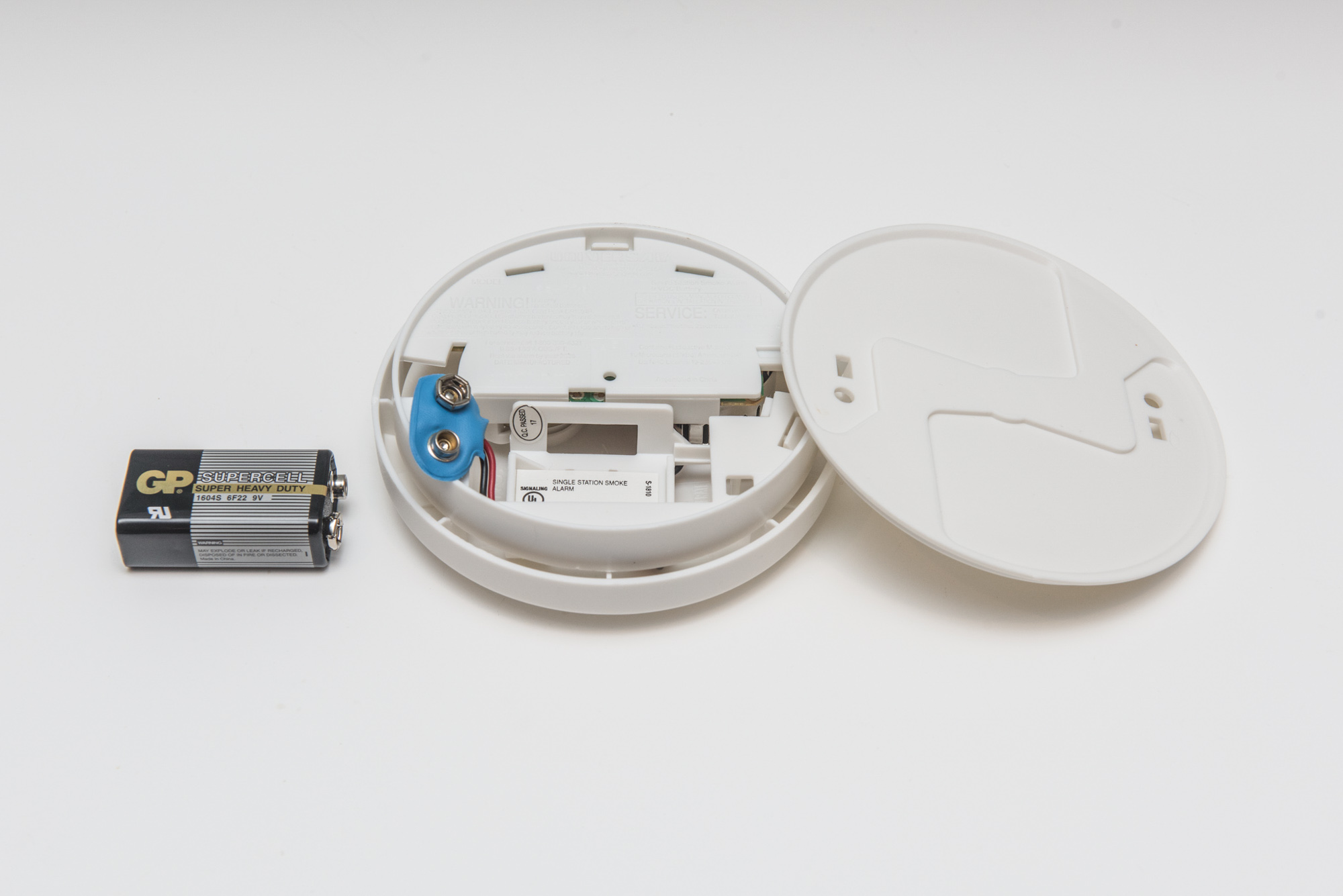
We inspected each unit out of the package to evaluate its convenience and basic design. The First Alert – SCO5CN came with two AA batteries already installed and immediately ready for testing. All of our tested units shipped with batteries included, which is good from a convenience standpoint, but leaves consumers guessing about how fresh they are.
Experts recommend that batteries should be replaced with an automatic reminder like being part of a battery shipping program or on one’s birthday. For long-life lithium batteries, it probably makes sense to check them once a year. Sealed units like the First Alert – “Atom” P1010 are designed to be discarded when they fail a battery test.
All of our units responded to the manufacturer’s recommended battery test by emitting a chirping or horn alarm.
Interconnecting and programming
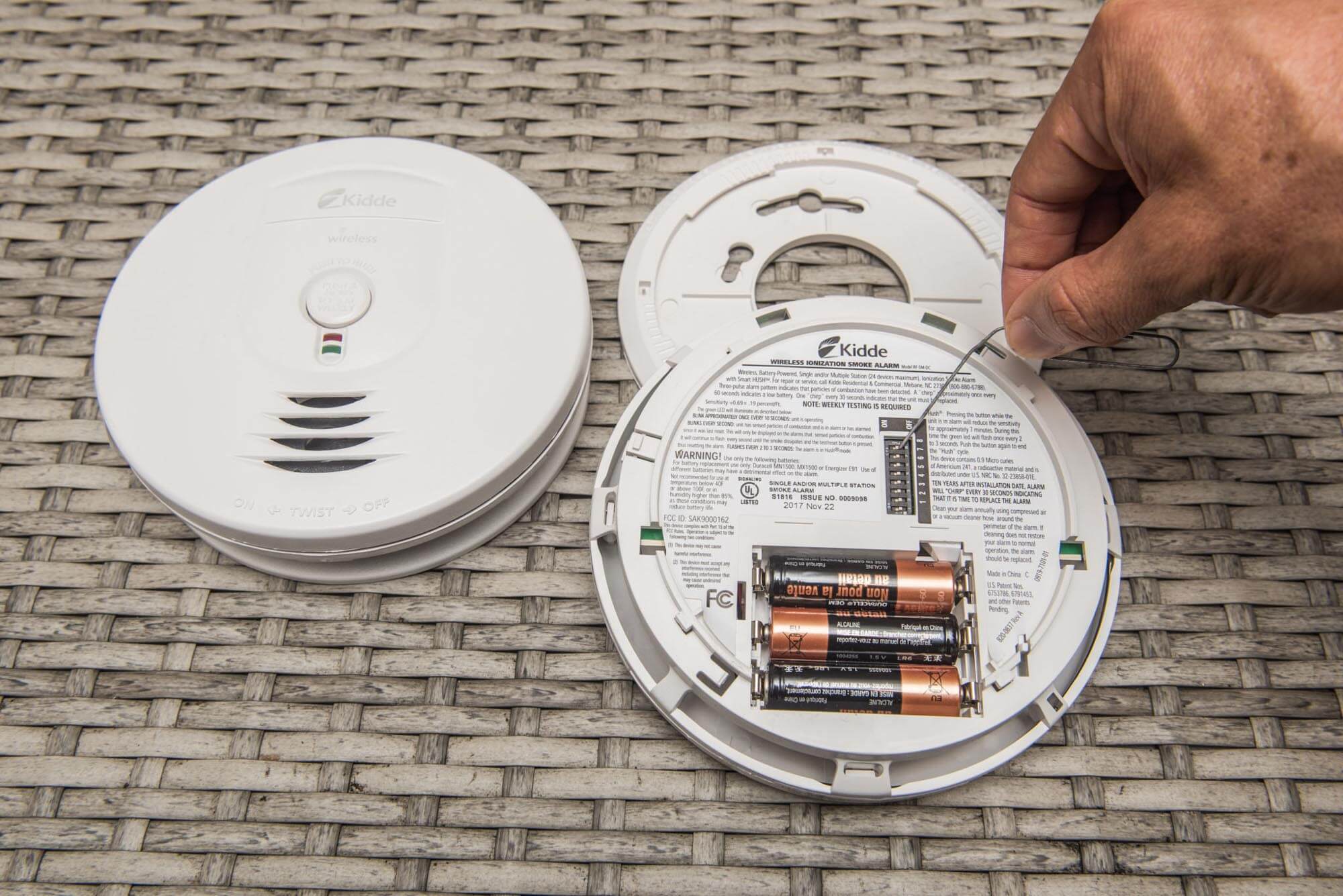
Interconnecting smoke detectors allows for notifying occupants about a smoke or fire condition anywhere in their home. With linked (interconnected) units, if an alarm sounds in a bedroom, for example, all linked units will sound as well. Only the same model units can be linked.
Programming units generally refer to being able to assign a specific location to a specific alarm unit. In addition to triggering all the interconnected units in a home, programming provides a voice alert that denotes the specific room/location of a smoke or fire event.
All home smoke detectors have the basic functionality required to detect fire: when smoke or fire is sensed, an alarm sounds. Unit pricing is a function of added features, and the most important step up in pricing and functionality from basic units to more sophisticated ones is the capability for wireless interconnection. Basic units are generally in the $20-25 range per unit, while interconnectable units are more commonly in the $25-35 range like the First Alert and Kidde models we tested.
Another very desirable feature — especially for the more false alarm-prone ionization units — is to be able to temporarily silence a false alarm either through a voice command, pushing a button on the unit itself or either way. If you need to remove the batteries from a unit to silence it, clearly there is a risk that you will neglect to reinstall them and consequently not be protected.
We tested two units, the First Alert – SCO501CN and the Kidde – RF-SM-DC that can be linked with other (same model) units. The First Alert is easily set up by depressing the main test button in sequence with the unit to be added. In addition, there are preprogrammed locations that allow a user to select the location for any room in the house. In the event of a fire or CO event, all the units issue a voice alarm noting the location of the fire.
The wireless setup for these units is different. For the First Alert, additional units can be added by going through a sequence of depressing buttons on the “original” unit and subsequently on the units to be added. The Kidde unit employs a more robust technology that allows the user to set a dip switch panel on the back of the unit to a common pattern. If left in default mode with all the switches off, the units will connect with one another. As is the case with virtually all home smoke detectors, different brands and models cannot be linked with one another.
False alarm hush
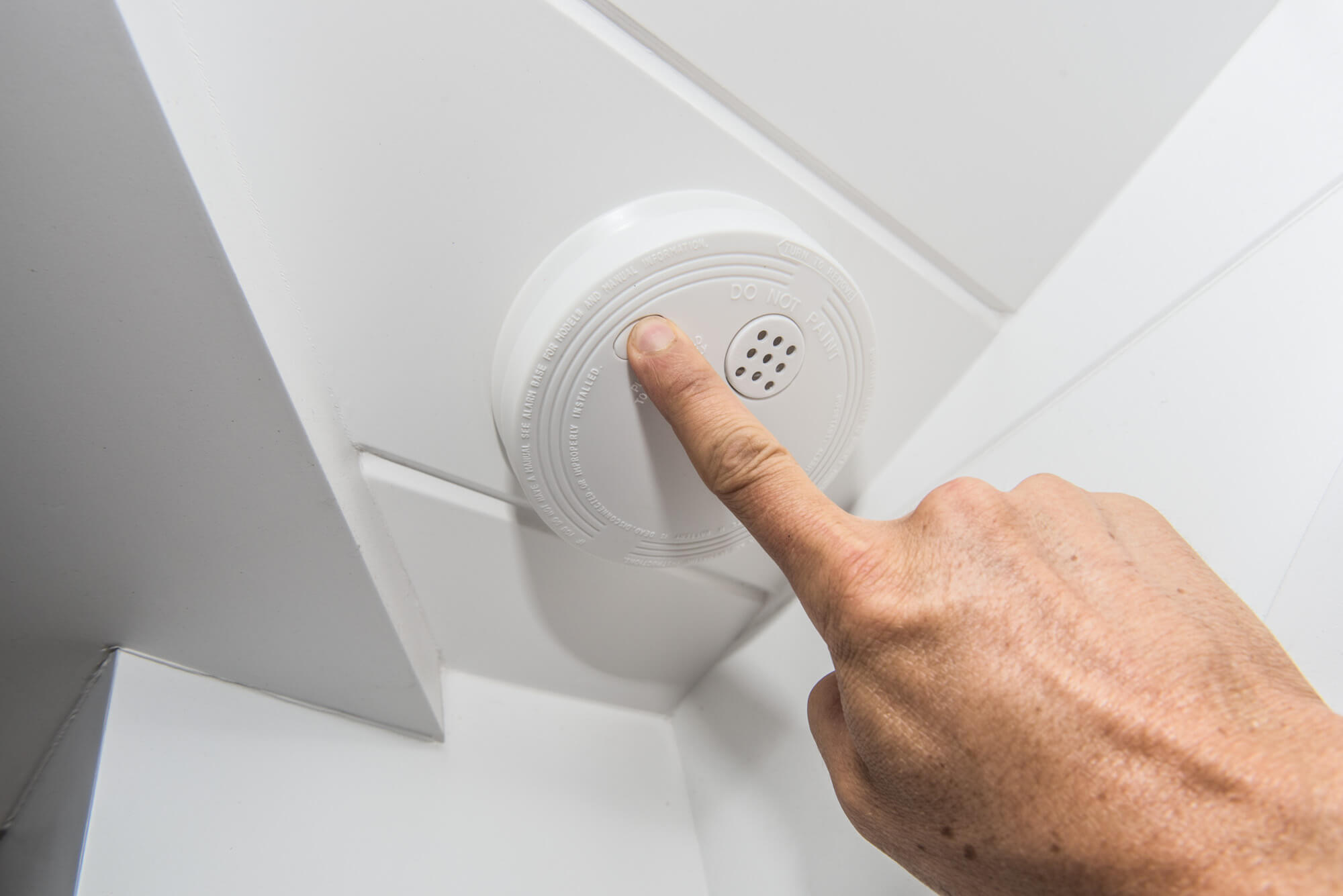
Our two top picks each have silence buttons that deactivate the units in the event of a false alarm. The First Alert – SCO501CN cooperated right away (both programmed units quieted immediately once the button was depressed), while the Kidde – RF-SM-DC required depressing the button for about one second. This proved a bit tricky; letting go of the button too quickly made the unit cycle through its programming options, and holding it too long didn’t silence the units.
The cute little First Alert – Atom P1010 has a silence button that quiets the unit for 10 minutes. If the unit continues to send an alarm in a false alarm scenario, then it must be replaced since it is a sealed unit with a (long-life) lithium battery.
The sophisticated Honeywell unit we tested can be hushed by depressing its test switch. In the hair dryer test recommended in the manual, the test switch silenced the unit.
Our Universal Security Systems model, the least expensive unit we tested, does not have a silence feature. Since it is an ionization alarm, albeit with Universal’s proprietary “Universal Smoke Sensing Technology,” it is likely more prone to nuisance alarms than photoelectric sensors.
Top pick bundle: First Alert + Kiddie
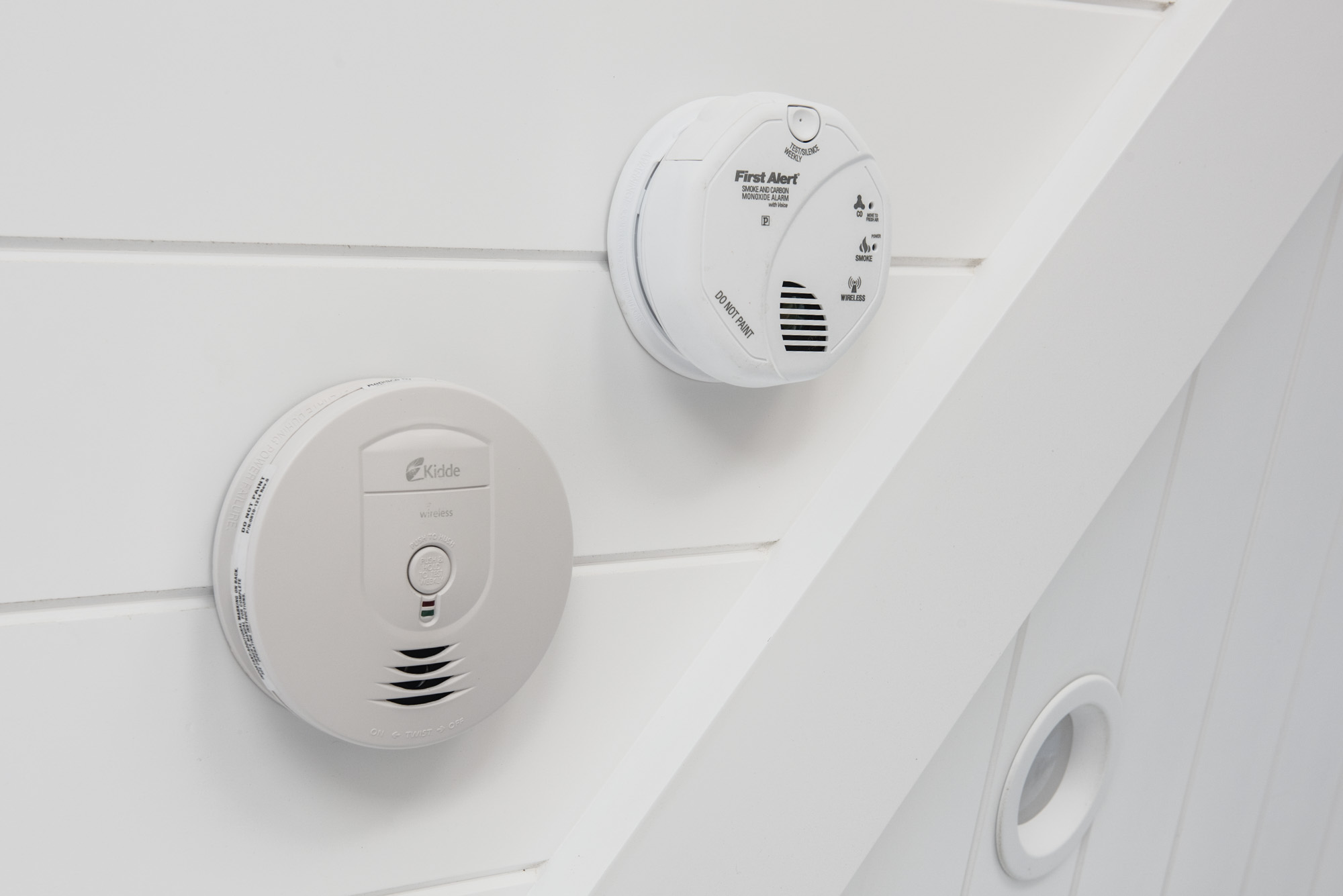
We recommend using two different units together as top picks.
The tandem of the First Alert – SCO501CN and the Kidde – RF-SM-DC battery powered smoke detectors provides complete home fire and carbon monoxide protection when co-located at required locations throughout a home. Co-locating these units, one with a photoelectric sensor for slow-burning fires and the other with an ionization sensor for flaming fires, provides redundant protection in the event that one of the alarms is disabled from the removal of a battery due to a false alarm, or in the event that the batteries die in one of the units.
Together, our two top picks allow a homeowner to set up as many units as required throughout a home and have security in knowing that a smoke or fire event in one location will alert everyone at once.
Top pick photoelectric unit: First Alert - SCO501CN
The First Alert - SCO501CN is a breeze to set up, install and program. This photoelectric unit with interconnect capability can cover everything from a small apartment to a large home and protect you from smoke, fire and carbon monoxide with voice notifications. We recommend that this unit is paired with the Kidde - RF-SM-DC, our top pick for an ionization sensor unit.
Both of our top picks excel at their respective specialties: the First Alert – SCO501CN (photoelectric sensor) for detecting slow-burning, smoldering types of fires, like those that might originate with a cigarette butt in a sofa cushion, while the Kidde – RF-SM-DC (ionization sensor) is excellent at detecting fast burning flaming fires.
One of the key reasons we recommend the First Alert – SCO501CN is for its voice alert feature, which is more likely to wake a child versus a sound alarm. This unit is extremely well and extensively reviewed by consumers and has a very friendly user interface. This unit is simple to test, program and uses AA batteries that can be tested easily. And to top it off, it can be programmed to voice announce the specific (room) location of a fire.
Top pick ionization unit: Kidde - RF-SM-DC
The Kidde - RF-SM-DC is an ionization sensor wireless unit with interconnect capability that is very sensitive to detecting fast burning fires, and like the First Alert - SCO501CN is simple to set up, install and program. We recommend pairing it with the First Alert unit to provide complete home protection from fire and smoke events.
While the Kidde – RF-SM-DC has a voice alert for the type of detection (fire or CO), it does not announce a specific location. However, it is a highly responsive ionization unit that pairs well with the First Alert because it also can be interconnected with other units. The Kidde is a natural partner for the First Alert – SCO501CN since it also uses AA batteries, and can be interconnected to multiple units throughout a home.
Our recommendation for both types of units — photoelectric and ionization — is reinforced by the official policy position of the NFPA, a leading fire protection educational and advisory association and learning resource. Along with the venerated consumer safety and compliance organization Underwriters Laboratory (UL), the NFPA’s official position is the consumers need both types of sensors in their homes. All the units that we tested carried one of UL’s certification marks. The inclusion of this mark means that representative products have satisfied UL’s requirements.
Key takeaways:
- The best protection comes from having two separate units — one using ionization sensor technology and the other photoelectric; both of our top picks function best with one another since they have complementary types of sensors.
- The photoelectric First Alert – SCO501CN has many features and functions just as well as more expensive hardwired units as long as batteries are checked frequently and the unit’s kept free of dust and dirt.
- The ionization Kidde – RF-SM-DC is a breeze to program and gives the security of very rapid alarms for fast burning fires.
- Programming for alarms to announce specific rooms/locations of a smoke or fire event is desirable, but not essential; the First Alert – SCO501CN has this feature.
Other products we tested
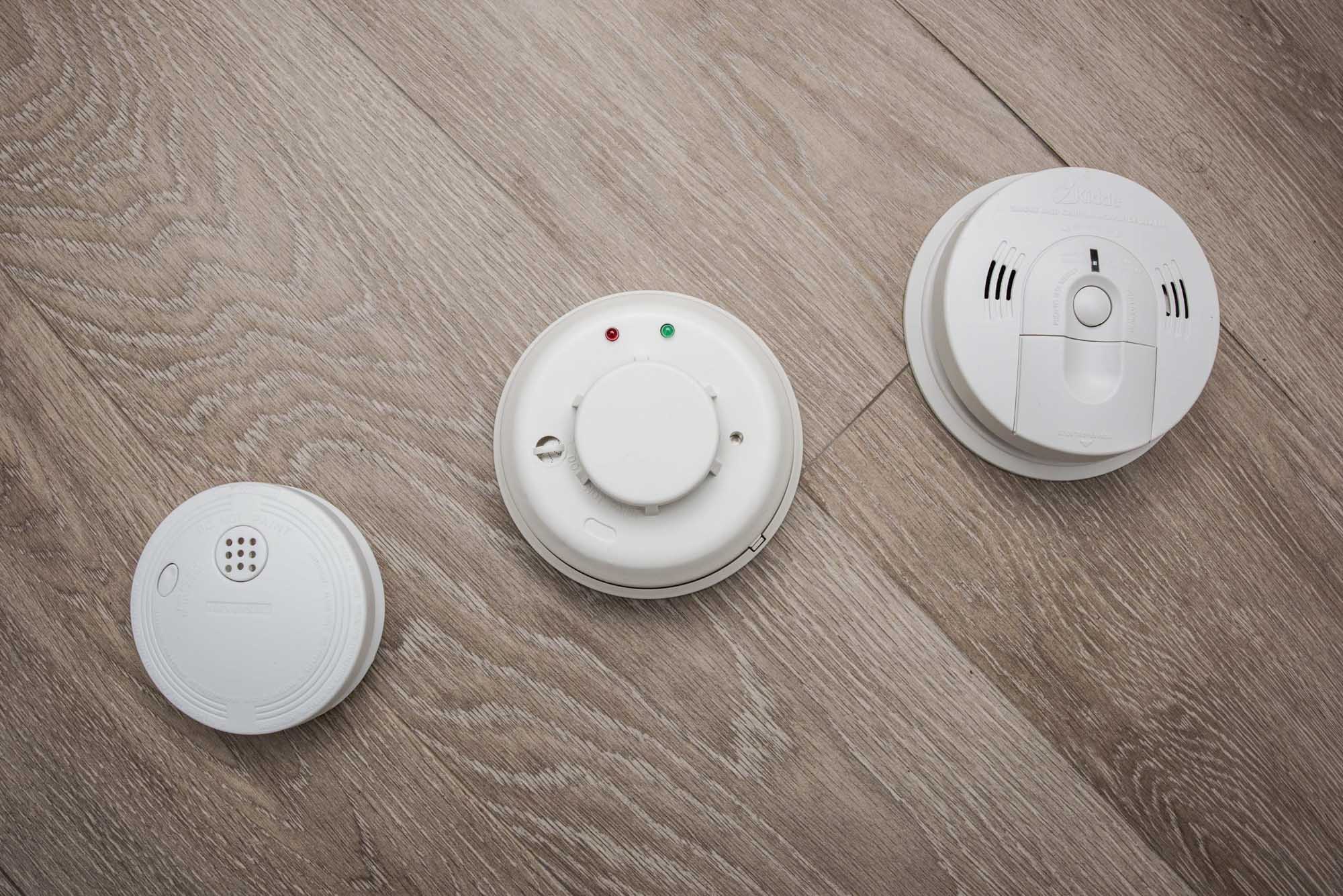
Universal Security Instruments – SS-770
The Universal Security Instruments – SS-770 scores high marks for plug-and-play simplicity in an inexpensive package. Lacking interconnect capability, the instructions, set-up and maintenance are relatively straightforward for this unit, although some reviewers have experienced a higher than normal incidence of false alarms. As expected for a lower price unit, there is no voice alarm or ability to silence the unit from voice or with a button on the unit.
First Alert – P1010
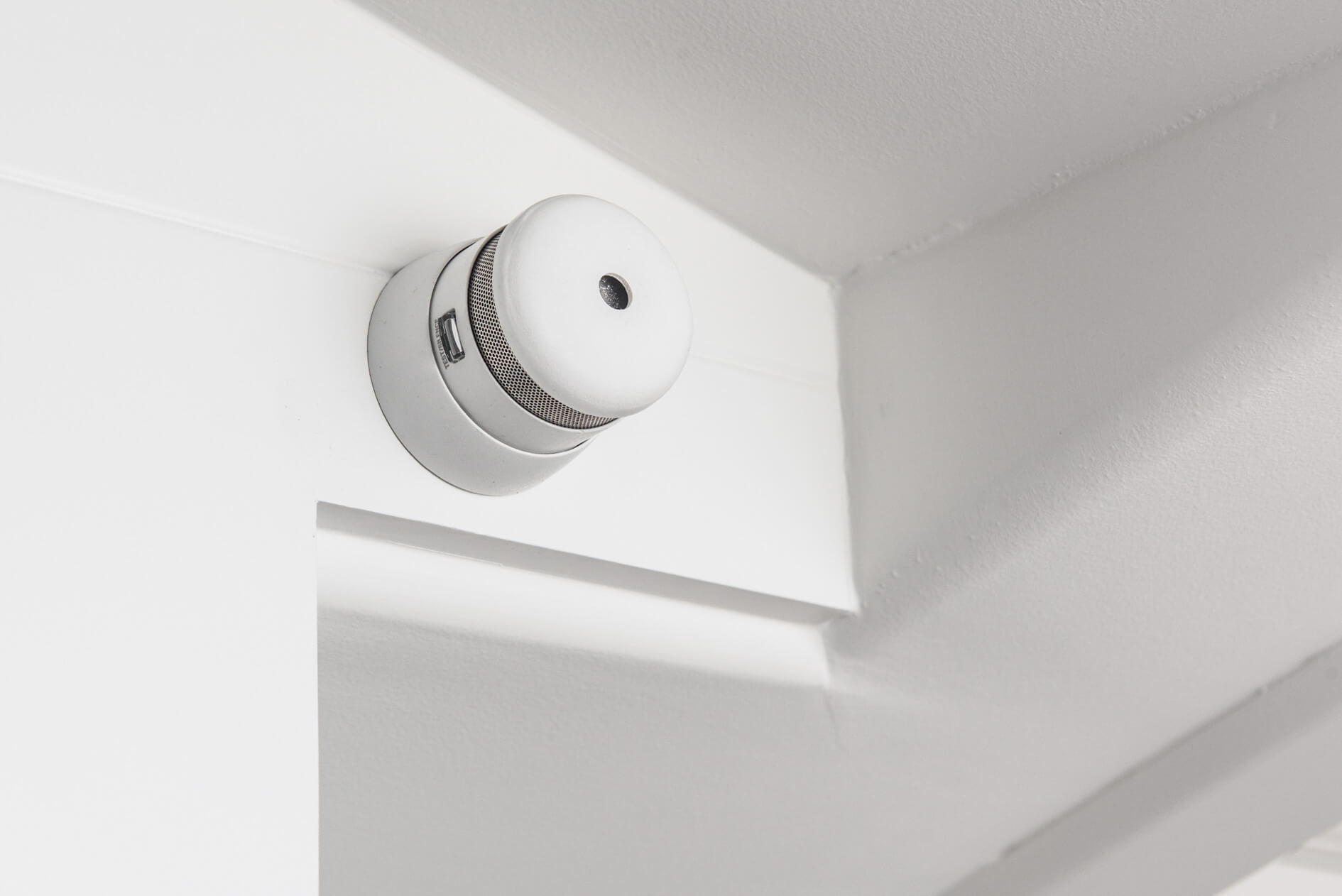
The First Alert – P1010 is an elegant little photoelectric smoke detector that uses a 10-year life lithium battery for a power source, and is the best-designed product in the category. The entire unit is approximately 1-¾” by 1-¾” and is barely visible, especially if it is mounted on a white wall. As with the Universal model, this unit cannot be interconnected and is recommended only for smaller dwelling units, and only if it is paired with an ionization sensor unit.
Kidde – KN-COSM-BA
The ionization sensor Kidde – KN-COSM-BA includes a CO detector, but does not have an interconnection feature. We like it for its easy battery replacement and push-button hush feature. For a small apartment that only needs fire detection in one location, the Kidde – KN-COSM-BA would make a good companion for a photoelectric unit that does not have an interconnection feature. When pairing ionization and photoelectric units, it makes sense to find units that use the same batteries to put them on the same change cycle.
Honeywell – 5808W3
The Honeywell – 5808W3 is in a somewhat different category from the other units tested in that it has the capability to be connected to a home monitoring system, such as the Honeywell 5800 series, that is connected to a local fire department. This photoelectric sensor is best considered for homeowners who are seeking to implement a whole home security system.
The Honeywell 5808W3 is the most expensive unit that we tested, and it can also be used for commercial installations with matching Honeywell monitoring receivers. It uses a 10-year life lithium battery, and the overall build quality is excellent.
In keeping with a unit that can cross over to commercial applications, the Honeywell has the least friendly user interface of all our tested models. The faceplate of the unit is a blank sheet of plastic with two LEDs, and to test the unit, a tool has to be inserted throughout the plastic housing.
The bottom line
First Alert touts itself as “America’s Safety Company” and is headquartered in Aurora, Illinois. It sponsors a fire safety initiative called “Safe Kids USA,” and provides smoke detectors at a reduced cost for low-income families. Kidde is a division of United Technologies, a large, diversified public company. The company roots can be traced back to 1917 when it produced the first fire and CO detection system for ships.
Although there are battery powered smoke detectors that can do everything in one package, we strongly recommend that consumers install two different types of units — one using ionization detection technology, and another using photoelectric technology — in each pertinent location in their home.
Our two top picks for a battery powered smoke detector, the First Alert – SCO501CN and the Kidde – RF-SM-DC represent two top performers from the dominant industry players in the smoke detector market. These units work well together since they employ different fire and smoke detection technology: photoelectric sensing for the First Alert and ionization for the Kidde.
We believe that consumers will be delighted with the First Alert – SCO501CN, a top performer for critical photoelectric smoke and fire detection. Its voice notification, interconnection capability and programmable, room-by-room functionality make this a cornerstone of your home protection strategy when combined with an ionization detector like the Kidde – RF-SM-DC.
Top pick photoelectric unit: First Alert - SCO501CN
The First Alert - SCO501CN is an outstanding battery powered photoelectric smoke detector that can be installed in multiples and programmed throughout a residence. It can protect you from smoke, fire and carbon monoxide by notifying a resident with specific locations of smoke or fire with a voice announcement. We recommend that this unit is paired with the Kidde RF-SM-DC, our top pick for an ionization sensor unit.
Our top pick for an ionization sensor unit, the Kidde – RF-SM-DC, is ideal for detecting fast burning fires. Like the First Alert – SCO501CN, it is simple to set up, program and maintain, and together, they are excellent partners.
Top pick ionization unit: Kidde - RF-SM-DC
The Kidde - RF-SM-DC is a battery powered ionization smoke detector that is superb at detecting fast burning fires. Like the First Alert SCO501CN, it is simple to set up, install and program. The Kidde allows for installing multiple units throughout a home and has a very intuitive dip switch linking protocol. We recommend pairing it with the First Alert unit to provide complete home protection from fire and smoke events.
More Reviews
Mountain House - Just in Case
Klarus - XT11GT
Specialized - Echelon II
SentrySafe - SFW123
Contours - Options Elite
Britax - B-Safe Ultra
The Best Outdoor Security Camera Systems
Nest - Cam Outdoor
Infant Optics - DXR-8
Safety 1st - Bamboo Gate
Honeywell - HEV620
Linenspa
Moldex - Pura-Fit

